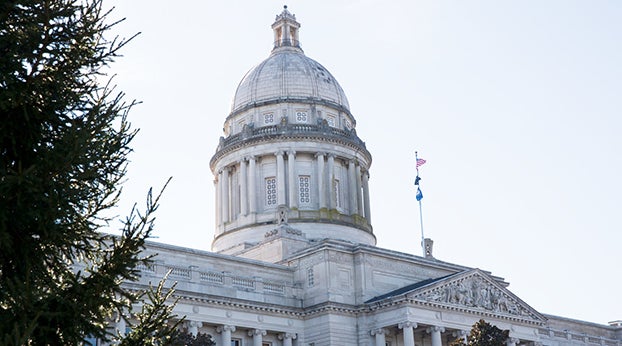Education since Rose: Remove the rose-colored glasses
Published 7:50 pm Thursday, June 6, 2019
By JIM WATERS
Guest Columnist
It’s been 30 years since the Kentucky Supreme Court’s Rose v. Council for Better Education decision that declared the entire body of the commonwealth’s school laws unconstitutional.
The ruling, which resulted in the single largest tax increase in the state’s history, went far beyond the initial claims of the lawsuit, which were primarily focused on money.
Instead, the justices, who wanted a radically improved education system, said a total education overhaul was needed that involved more than just financial issues.
Get ready for loud applause from some in the public-education sector wearing rose-colored glasses and yapping about all the progress made since the court’s decision.
How much of the hoopla is justified?
You’ll get no argument here about the state of — or spending on — public education in Kentucky when the court ruled in 1989.
U.S. Census Bureau reports indicate Kentucky’s total school revenue from all sources during the 1988-89 term amounted to only $3,206 per pupil, which ranked 46th among the states.
Yet the data indicate the Rose decision may have done much more to solve funding problems than it did to actually bring significant improved academic achievement.
While some – usually those in the system – continue to drone on about not having enough money, the latest Census data from 2017 shows Kentucky schools now receive $11,578 per pupil, which moved the state up in the rankings.
Even after adjusting for inflation, per-pupil spending in 1989 would be $6,328 in equivalent 2017 dollars, which means taxpayers have put up $5,250 for each student in additional real dollars, amounting to a whopping post-inflation increase of 83% – not exactly a shabby performance in one of the nation’s historically poorest states.
Yet while spending has dramatically increased, the same cannot be said for academic performance.
Still, the cheerleaders will be out in full force.
Give me an “R-O-S-E.”
“What’s it spell? Great strides!”
“What’s it spell? Great strides!”
“I can’t hear you!! Great strides!”
Of course, good cheerleaders twirl their pom poms without much consideration about the story being told by the scoreboard.
Just a few years after the Rose decision, results from the first state-level testing by the National Assessment of Educational Progress (NAEP) showed Kentucky’s schools had a whole lot of work to do.
For example, only 13% of Kentucky’s fourth-grade whites and an abysmal 3% of blacks scored proficient in math in 1992.
Flash forward more than a quarter century and the latest NAEP results indicate math-proficiency rates in 2017 were only 45% for Kentucky’s white fourth-graders and just 15% for blacks.
Math-proficiency results for white eighth-graders were even worse, indicating that while there may have been some improvement from 1990 when only 11% of these middle-schoolers were proficient – so any change would essentially be an improvement – still by 2017 fewer than one out of three made the grade.
Time almost stood still for blacks.
Only 2% of Kentucky’s black eighth-grade students were deemed math-proficient in 1990; by 2017, still fewer than 10% of blacks reached the plateau of proficiency.
Neither have Kentucky’s eighth-grade white students done well on NAEP math scores when compared to whites in other states.
White students in 41 other states, including in the notoriously problematic District of Columbia schools, outscored Kentucky’s whites on NAEP’s 2017 eighth-grade math results in a statistically significant manner.
It’s not very encouraging, especially considering overall math-proficiency rates for eighth-grade students nationwide still run only 33%.
This is all Kentucky’s schools have accomplished in the decades since Rose and falls way short of the justices’ vision of holistic improvement stretching beyond spending and state budgets to classrooms and improved opportunities for students.
Don’t expect the Rose-at-30 cheerleaders to provide the full story about Kentucky’s educational performance.
I, on the other hand, own no rose-colored glasses.
Jim Waters is president and CEO of the Bluegrass Institute for Public Policy Solutions, Kentucky’s free-market think tank. He can be reached at jwaters@freedomkentucky.com and @bipps on Twitter.






